AMUSING MUSINGS
(The following is excerpted from The Ever Curious Gardener: Using a Little Natural Science for a Much Better Garden, available here.)
Write the Name Right!
With little pressing, gardenwise, this time of year, why not muse about plant names — their common names and their sometimes intimidating-looking botanical names? Take the tree commonly named dawn redwood for example. ”Dawn redwood” admittedly reads more easily than this tree’s botanical name, Metasequoia glyptostroboides.
Wait! don’t stop reading! Instead, speak the Latin name aloud slowly: me-ta-see-KYOY-a GLYP-to-stro-boy-dees. It’s delightful, tonal poetry vocalized by a smooth dance of the lips, the tongue, and the upper pallete.
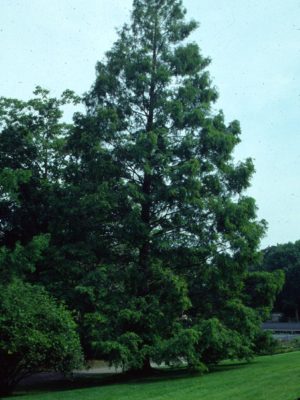
Sensual pleasure aside, botanical names have a practical side. That woolly-leaved plant that sends up a candelabra of creamy yellow flowers each summer has a hundred or so common names. I call it mullein but other names include Aaron’s rod, Adam’s flannel, bullock’s lungwort, and velvet plant. This plant has only one botanical name, though, Verbascum thapsus.
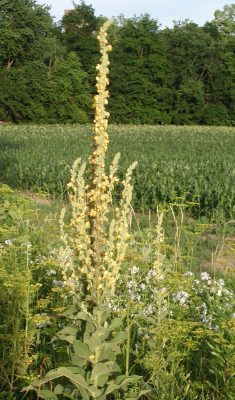
Each plant gets only one botanical name, and that name is recognized worldwide. A botanical name has two parts, both based on Latin. The first word in the binomial is the genus; each genus is subdivided into one or more species, the second word of the binomial. This system of plant classification was originally set forth in Species Plantarum, a book written in 1753 by Carl von Linne (usually known by the latinized form of his name, Linnaeus.)
I have a pet peeve about botanical names that finds root in a challenge issued way back in high school English class. Mr. Mehegan gave us detailed information on the correct way to list bibliographic references at the ends of our term papers: punctuation, underlining, capitalization, ordering. Then he predicted (correctly) that no one would list all their references exactly right. Now it irks me when rules are not followed in writing plant names.
Rules for plant nomenclature are simpler than Mr. Mehegan’s rules for referencing. Genus and the species names are always underlined or italicized. Genus is always capitalized; species is not, unless it commemorates a person. A species is never written by itself; if the genus is obvious, it may precede the species in abbreviated form.
The Name is Loaded with Information
With correct botanical information under my belt, if I want a packet of marigold seeds, I could ask for Tagetes minuta whether I am in Andorra or Zanzibar. In the case of plants like petunia, chrysanthemum, rhododendron, and fuchsia, at least part of the botanical name is the same as the common name in English. In some cases, using the botanical name might be the only way I could be assured of getting the plant I really want. If I wanted to plant bluebells, Hyacinthoides, and searched and asked for it by its common name, I could end with plants in the Mertensia, Muscari, Campanula, or Eustoma genus.
In the case of plants like petunia, chrysanthemum, rhododendron, and fuchsia, at least part of the botanical name is the same as the common name in English. In some cases, using the botanical name might be the only way I could be assured of getting the plant I really want. If I wanted to plant bluebells, Hyacinthoides, and searched and asked for it by its common name, I could end with plants in the Mertensia, Muscari, Campanula, or Eustoma genus.
When I’ve planted lilies, I didn’t want to pick from a grab bag of about 80 different species of Lilium; I wanted to plant—and did plant—the sweetly fragrant Lilium candidum (which actually is the only lily with the common name Madonna Lily). I also wasn’t interested at that time in planting daylily (Hemerocallis spp.) or lily of the valley (Convallaria majalis), neither of which are true lilies. Neither is even in the Lily Family, let alone the Lilium genus!
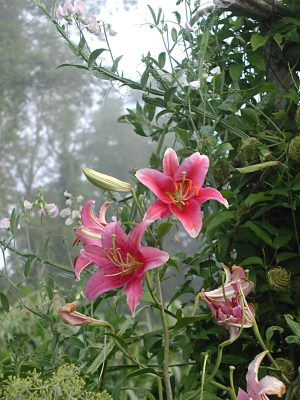
A botanical name can tell a story about a plant: its discovery, its origin, its form. Adalbert Emil Redcliffe Le Tanneux von Saint Paul-Illaire discovered what became known as African violet growing amongst the lush vegetation in the mountain jungles of East Africa; in his honor the plant was given the botanical moniker Saintpaulia ionantha. Juniperus virginiana is a juniper native to eastern North America; Juniperus chinensis hails from China. Tulip tree, Liriodendron tulipfera, has a particularly descriptive name. Liriodendron was the ancient name for this plant, meaning “lily tree.” And tulipfera means “tulip bearing.” Tulip tree’s flowers do, indeed, resemble tulips, as long as you don’t look too closely. Tulip is a member of the Lily family. Tulip tree is in the Magnolia family.
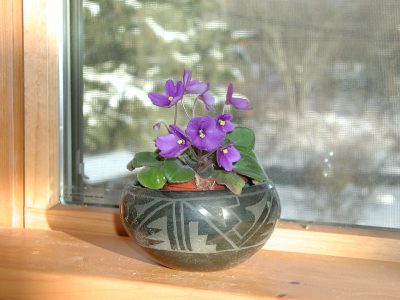
African violet
Family Matters
Botanical names can tell about plant relationships. The apparent similarity between peaches, plums, and apricots is confirmed in the similarity of their names, Prunus persica, Prunus domestica, and Prunus armeniaca, respectively.
Knowing kinship can help decide what grafts might be successful. Grafts between the same genus and species almost always spell success. Success is even possible between different species of the same genus, which is why I once grafted a couple of branches from my sweet cherry tree (Prunus avium) onto my tart cherry tree (Prunus cerasus). The sweet cherry didn’t bear reliably enough to warrant living here as a whole tree. Emulating George Washington, I chopped the (sweet) cherry tree down following a successful graft.
In some cases, a species might be subdivided into botanical varieties. For instance, cabbage and its close relatives all are Brassica oleracea. But cabbage itself is the botanical variety capitata (meaning head), Brussels sprouts are gemmifera (little gems), broccoli is botrytis (cluster-like), and kale is acephala (without a head). The correct way to write broccoli is Brassica oleracea var. capitata.
If you’re put off by botanical names for plants, take heart because the situation used to be more awkward. Before the days of Linneaus, baby’s-breath was the Latin mouthful Lychnis alpina linifolia multiflora perampla radice. Catnip was known as Nepeta floribus interrupte spicatis pedunculatis. (Both are mellifluous but too long for a name.) Thanks to Linneaus that the scientific names of these two plants now are the manageable and descriptive Gypsophila elegans to Nepeta cataria, respectively.
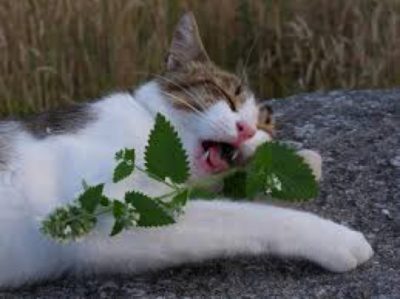


I read your post every week.
This one was really fun.
Thanks for your efforts.
Best Wishes
sharon
you got my two favorite tree names with the glypto and the tulipifera! both trees are lovely to look at as well. thanks so much.
A good example is Geranium. The genus could be Geranium or it could be Pelargonium. Also I was in Cuba in 2012 to learn about sustainable and urban agriculture. One place we visited they didn’t speak English and we didn’t speak Spanish but all they had to do was hold up a small bag and say Bacillus thuringiensis and no explanation was needed.
Lee, you’d probably like Harry Zirlin’s series of articles if you’re not already familiar with them https://www.naba.org/pubs/ab133/ab133taxonomists_scudders_names.pdf